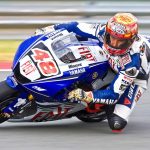Key Takeaways
- Conor McGregor’s fighting style is boxing-heavy with a focus on striking, employing an aggressive and fast-paced approach.
- He utilizes footwork and movement to evade and counter with powerful punches, often waiting for opponents to close the distance before striking.
- McGregor incorporates elements from various martial arts such as boxing, capoeira, taekwondo, and karate into his fighting style.
- There has been a noticeable change in McGregor’s fighting style over the years, with a shift towards a more boxing-heavy approach and reduced reliance on kicks. This change in style has had mixed results, with McGregor experiencing a recent record of 1 win and 3 losses since his return to the UFC in 2018.
McGregor’s Boxing-Heavy Style: A Closer Look
McGregor’s boxing-heavy style, characterized by powerful punches and a focus on striking, has undergone closer scrutiny. When exploring McGregor’s boxing technique, it becomes evident that his footwork plays a significant role in enhancing his striking abilities. McGregor utilizes precise footwork to create angles and maintain distance, allowing him to strike with maximum effectiveness. His footwork enables him to evade opponents’ attacks while simultaneously setting up his own devastating punches. McGregor’s ability to swiftly move in and out of range, combined with his explosive footwork, gives him a distinct advantage in the octagon. By constantly adjusting his footwork, McGregor can control the pace of the fight and dictate the flow of striking exchanges. The influence of McGregor’s footwork on his striking can’t be understated, as it’s a crucial component of his boxing-heavy style.The Aggressive and Fast-Paced Approach of Conor McGregor
Conor McGregor’s aggressive and fast-paced approach in the octagon has consistently captivated fans and opponents alike. His fighting style is characterized by a relentless aggression and lightning-fast pace that keeps his opponents on their toes. Here are four key aspects of McGregor’s aggressive and fast-paced approach:- Pressure and control: McGregor excels at pressuring his opponents and controlling the center of the octagon. He constantly moves forward, forcing his opponents to react and defend.
- Counterpunching: McGregor is a master counterpuncher who waits for his opponents to close the distance before unleashing powerful strikes. His speed and timing allow him to land devastating counterpunches when his opponents least expect it.
- Footwork and movement: McGregor’s footwork and movement are essential to his aggressive style. He uses quick footwork to evade his opponents’ attacks and create angles for his own strikes.
- Combining power and speed: McGregor’s punches are known for their power and speed. He throws lightning-fast combinations with devastating power, overwhelming his opponents with his aggressive onslaught.
Controlling the Octagon: McGregor’s Pressure and Center Control Tactics
With his aggressive and fast-paced approach, Conor McGregor excels at pressuring his opponents, forcing them to react and defend while controlling the center of the octagon. McGregor’s pressure tactics are highly effective in dictating the pace and flow of the fight. By constantly moving forward and maintaining center control, McGregor limits his opponent’s options and forces them to fight on his terms. This allows him to set up his strikes and counterattacks with precision. However, McGregor’s center control approach also comes with strategic advantages and disadvantages. On one hand, controlling the center of the octagon allows McGregor to cut off his opponent’s movement and trap them against the cage, limiting their escape routes. It also gives him better angles to land powerful strikes and maintain distance. On the other hand, McGregor’s aggressive style can leave him susceptible to counterattacks and takedowns, especially against opponents with strong wrestling or grappling skills. Additionally, constantly pressuring his opponents requires high energy expenditure, which can be challenging to sustain over longer fights.McGregor as a Counterpuncher: Waiting for the Perfect Opportunity
As a counterpuncher, McGregor patiently waits for the perfect opportunity to strike. His counterpunching techniques and defensive strategies are key components of his fighting style. Here are four aspects that highlight McGregor’s effectiveness as a counterpuncher:- Timing and Accuracy: McGregor has a keen sense of timing, allowing him to capitalize on his opponents’ mistakes. He waits for them to commit to strikes before countering with precision and accuracy.
- Footwork and Head Movement: McGregor’s footwork and head movement play a crucial role in his counterpunching. He uses agile footwork to create angles and evade incoming strikes, while his head movement helps him slip punches and set up counterattacks.
- Power and Speed: McGregor possesses tremendous power and speed in his punches, making his counters devastating. He capitalizes on his opponents’ openings by delivering powerful strikes with lightning-fast speed.
- Defensive Awareness: McGregor’s defensive awareness is a key aspect of his counterpunching style. He maintains a high guard and uses his evasive footwork and head movement to avoid getting hit, allowing him to effectively counter his opponents’ attacks.
Footwork and Movement: McGregor’s Evasive and Powerful Punches
Impressively, McGregor utilizes his footwork and movement to evade his opponents’ strikes and deliver powerful punches. McGregor’s footwork techniques and evasion strategies are crucial components of his fighting style. His ability to move quickly and fluidly allows him to create angles and avoid getting hit, while also enabling him to generate power in his punches. McGregor’s footwork is characterized by his ability to switch stances seamlessly, utilizing a wide range of movement patterns to keep his opponents guessing. He often employs a bladed stance, with his back foot facing outward and his front leg angled towards his opponent, allowing him to maintain balance and mobility while still being able to generate explosive strikes. McGregor’s footwork is a testament to his mastery of the art of movement in combat sports, and it plays a vital role in his overall success in the Octagon.Unveiling McGregor’s Martial Arts Arsenal
He combines his knowledge of boxing, capoeira, taekwondo, Brazilian Jiu-jitsu, and karate to create a diverse martial arts arsenal. Uncovering McGregor’s training methods reveals the depth of his expertise in various disciplines. However, when analyzing McGregor’s weaknesses in Brazilian Jiu-jitsu, it becomes evident that this martial art is the weakest part of his game. Despite his proficiency in striking arts like boxing and taekwondo, McGregor has struggled when faced with opponents who possess strong grappling skills. His lack of proficiency in Brazilian Jiu-jitsu has been exploited in previous fights, leading to his downfall. McGregor’s training regimen should focus on improving his ground game and submission defense to address this weakness and become a more well-rounded fighter.McGregor’s Fighting Stance: A Blend of Karate and Boxing
With a modified blend of Shotokan karate kokutsu-dachi and a bladed boxing stance, McGregor’s fighting stance combines the best of both worlds. His wide and L-shaped feet, along with his back foot facing outward and front leg facing his opponent or at an angle, provide him with a solid base for both striking and evading attacks. McGregor’s stance allows him to have better defense and evasion capabilities, as well as the ability to generate power from his punches. Compared to other fighters, McGregor’s stance stands out due to its unique combination of karate and boxing elements. While many fighters tend to rely solely on either boxing or karate, McGregor has successfully integrated both styles into his stance, giving him a distinct advantage in the octagon. The importance of McGregor’s fighting stance can’t be understated, as it forms the foundation of his overall style and sets him apart from his opponents.The Evolution of McGregor’s Fighting Style: 2008 to 2017
During the years 2008 to 2017, McGregor’s fighting style underwent significant changes as he honed his skills and adapted to different opponents. The evolution of McGregor’s fighting style during this period can be highlighted by the contrasting styles of his early career and his recent fights. Here are some key aspects to note:- McGregor’s use of Capoeira: McGregor incorporated dance-like movements and evading strikes from Capoeira into his fighting style. This added an element of unpredictability and agility to his attacks.
- McGregor’s use of Taekwondo: McGregor’s fighting style was also influenced by Taekwondo, which emphasized striking defense and maintaining distance. This allowed McGregor to effectively evade and counter his opponents’ attacks.
- Blend of boxing and Shotokan Karate: McGregor’s style during this period was a blend of a boxer and a Shotokan Karate practitioner. He utilized footwork and movement to evade strikes and counter with powerful punches.
- Shift towards a more boxing-heavy style: Towards the later years of this period, McGregor’s fighting style became more focused on boxing. He relied less on flashy kicks and more on head movement and nimble footwork.
Impact of McGregor’s Style Change: From Flashy Kicks to Boxing-Heavy
The impact of McGregor’s style change, from flashy kicks to a boxing-heavy approach, has significantly altered the dynamics of his fights. McGregor’s transition from relying on flashy kicks and taekwondo techniques to a more boxing-heavy style has had mixed results on his recent record. Since his return to the UFC in 2018, McGregor has only managed to secure one win and has suffered three losses. This change in style was evident in his fights against Khabib Nurmagomedov and Dustin Poirier, where he struggled to find success. McGregor’s reduced kicking and increased reliance on head movement and boxing techniques have exposed some weaknesses in his game. While his striking skills remain formidable, the lack of variety in his attacks and the absence of his trademark flashy kicks have made him more predictable and easier to defend against for his opponents.McGregor’s Fighting Style: A Post-2017 Analysis
Since 2017, McGregor’s fighting style has undergone a significant transformation, as he’s shifted towards a more boxing-heavy approach. This change in his style has been influenced by his move to welterweight, which has had both positive and negative effects on his fighting style. 1) McGregor’s move to welterweight has allowed him to showcase his boxing skills to a greater extent. With the increase in weight, he’s been able to generate more power in his punches and has become a more formidable striker. 2) However, the move to welterweight has also exposed some weaknesses in McGregor’s game. He’s struggled with the increased size and strength of his opponents, particularly in grappling exchanges. This has highlighted his underutilization of Brazilian Jiu-jitsu, which remains the weakest part of his skill set. 3) Despite these weaknesses, McGregor’s current fighting style still has strengths. His aggressive and fast-paced approach, combined with his boxing skills, allows him to pressure and control the center of the octagon. He’s a skilled counterpuncher who utilizes footwork and movement to evade and counter with powerful punches. 4) One potential weakness of McGregor’s current fighting style is his reduced emphasis on kicking. While his boxing-heavy approach has been effective, it has limited his options in terms of attack and defense. By relying less on kicks, McGregor may be giving his opponents an opportunity to exploit this gap in his arsenal.Are There Any Fighters in UFC/MMA Who Use Tickling as a Tactic?
Tickling in ufc/mma tactics examined While unconventional tactics have been witnessed inside the Octagon, tickling is certainly not one of them. The world of UFC/MMA is filled with intense training, skillful techniques, and strategic maneuvers. Fighters rely on their physical abilities and combat proficiency to gain an upper hand, leaving tickling far outside the realm of potential strategies.
Conclusion
In conclusion, Conor McGregor’s fighting style has undergone significant changes in recent years. While he remains predominantly boxing-heavy, McGregor has adapted his approach to different weight classes and opponents. His evolution from flashy kicks to a more boxing-focused style has proven to be successful, with his lethal left-hand cross becoming a signature move. McGregor’s ability to control the center of the octagon and deliver devastating counters showcases his technical skill and strategic mindset. Like a chameleon adapting to its surroundings, McGregor continues to evolve and excel in the ever-changing world of mixed martial arts.Latest posts by Mike Williams (see all)
- 15 Best Martial Arts Weapons (Fighting & Training) - October 14, 2024
- Is Fencing a Martial Art? (Yes, 4 Reasons Why) - October 14, 2024
- 7 Best Martial Arts for Self-defense Ranked (Highly Effective) - October 14, 2024










